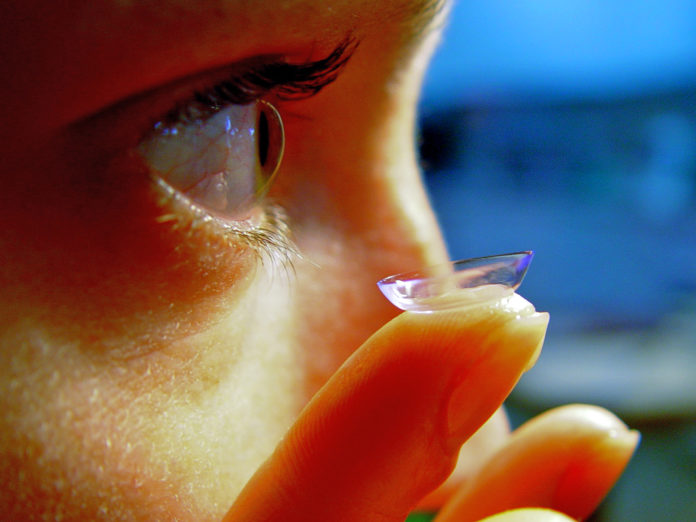Contact lenses disposed off in drains are a reason for microplastic pollution
Disposing contact lenses may be contributing to microplastic pollution in the waterways.
New research presented at the 256th National Meeting & Exposition of the American Chemical Society (ACS) have reported how contact lenses may be a factor in environmental pollution.
 While contact lenses are widely used, the fact that they are disposable – some last for a day- may be a problem for the earth.
While contact lenses are widely used, the fact that they are disposable – some last for a day- may be a problem for the earth.
ACS is the world’s largest scientific society. “I had worn glasses and contact lenses for most of my adult life,” Rolf Halden, Ph.D., says. “But I started to wonder, has anyone done research on what happens to these plastic lenses?”
His team had already been working on plastic pollution research, and it was a startling wake-up call when they couldn’t find studies on what happens to contact lenses after use.
“We found that 15 to 20 percent of contact wearers are flushing the lenses down the sink or toilet”
“We began looking into the U.S. market and conducted a survey of contact lens wearers. We found that 15 to 20 percent of contact wearers are flushing the lenses down the sink or toilet,” says Charlie Rolsky, a Ph.D. student who is presenting the work.
Halden, Rolsky and a third member of the team, Varun Kelkar, are at the Biodesign Institute’s Center for Environmental Health Engineering at Arizona State University (ASU).
Lenses that are washed down the drain ultimately end up in wastewater treatment plants. The team estimates that anywhere from six to 10 metric tons of plastic lenses end up in wastewater in the U.S. alone each year. Contacts tend to be denser than water, which means they sink, and this could ultimately pose a threat to aquatic life, especially bottom feeders that may ingest the contacts, Halden says.
Analyzing what happens to these lenses is a challenge for several reasons. First, contact lenses are transparent, which makes them difficult to observe in the complicated milieu of a wastewater treatment plant.
Further, the plastics used in contact lenses are different from other plastic waste, such as polypropylene, which can be found in everything from car batteries to textiles. Contact lenses are instead frequently made with a combination of poly(methylmethacrylate), silicones and fluoropolymers to create a softer material that allows oxygen to pass through the lens to the eye. So, it’s unclear how wastewater treatment affects contacts.
“We found that there were noticeable changes in the bonds of the contact lenses after long-term treatment with the plant’s microbes,” says Kelkar. The team concluded that microbes in the wastewater treatment facility actually altered the surface of the contact lenses, weakening the bonds in the plastic polymers.


